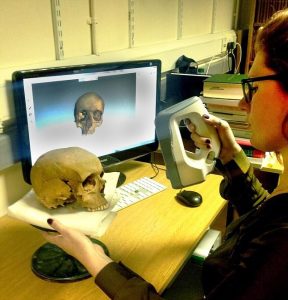Excavations at Thorton Abbey in Lincolnshire revealed 700-years-old remains of a priest who died during during the Great Famine, which killed millions across the continent in the 14th century.

Last year, a total of 48 skeletons of Black Death were excavated at the site of the abbey. Now, remains of a priest have been unearthed, from a grave that displays an inscription of the deceased’s name, Richard de W’Peton – abbreviated from “Wispeton”, a Medieval incarnation of modern “Wispington” in Lincolnshire – and his date of death, 17 April 1317. The 1 metre 60 centimetre high individual, whose remains were discovered was named Richard de W’Peton and was a priest, aged 35 to 45 when he died. The priest’s grave displays an inscription of the deceased’s name, Richard de W’Peton – abbreviated from “Wispeton“, a Medieval incarnation of modern “Wispington” in Lincolnshire – and his date of death, 17 April 1317.

A 3D scan of his skull revealed the priest may have suffered a violent attack, as the back of his skull shows evidence of an extremely well-healed blunt force trauma many years before his death. His teeth showed signs of malnutrition or illness, and the researchers believe he may have died during the Great Famine of 1315 to 1317. His skeleton suggests he had done hard physical work in his early life, showing signs of robust muscle attachments. His teeth show distinctive lines known as dental enamel hypoplasia, indicating that his early years had been marked by a period of malnutrition or illness.

According to the researchers, the Famine was at its peak by spring 1317, when the priest died. The events of the crisis would have affected medieval hospitals like Thornton Abbey, and the priests who served there. The priest named Richard was possibly held in high regard during his lifetime, as he was given an elaborate burial in the most prestigious part of the hospital chapel.

(after University of Sheffield, Daily Mail Online & The Telegraph)